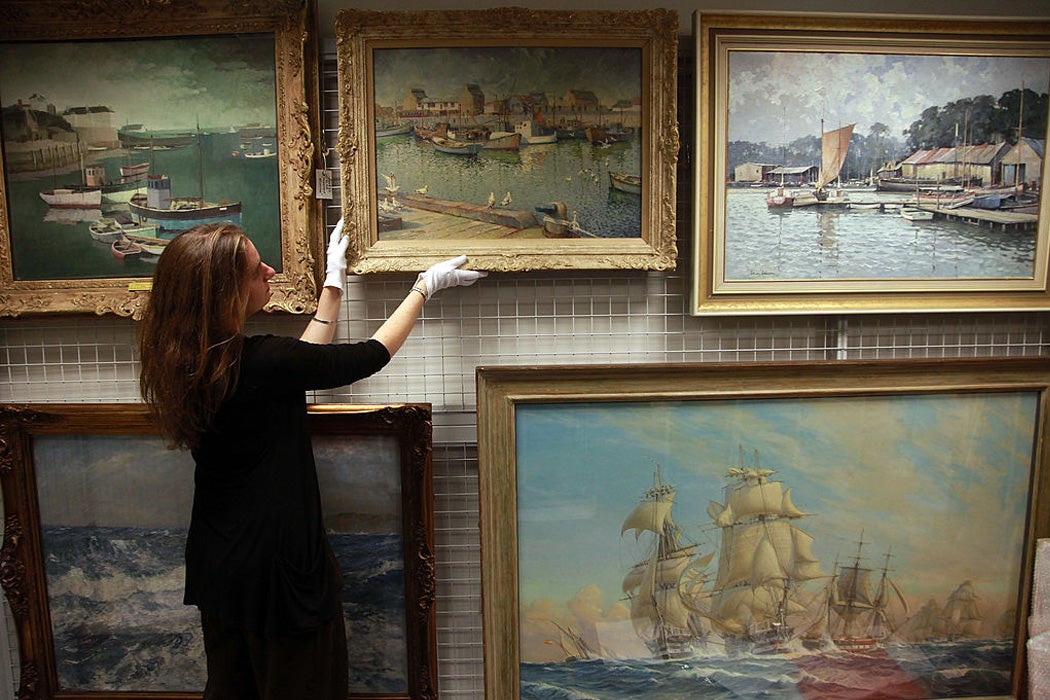On April Fools’ Day, Artnet teased its readers with a fake headline about how the Met Museum had hired Marie Kondo to help “tidy up” unwanted art from its collection. While they were joking, the questions that arise around deaccessioning museum collections are serious.
Culture reporter Robin Pogrebin’s recent article for the New York Times reveals some of the underlying problems that museums face when deaccessioning (or removing items from a permanent collection). She describes how museums across the U.S. address their basements full of art that might never be shown or displayed. These rooms are costly to museums, both because they take up space and because the art must be stored and monitored under precise conditions.
But the deaccessioning process can be contentious. Writer Charles Phillips shares cautionary tales of deaccessioning missteps, sometimes leading to scandals within the museum community. In one example he shares, the gem and mineral curator of the Smithsonian was accused of deaccessioning valuable gems from the public collection in order to sell them at a profit.
So naturally, museums sometimes get nervous when the topic arises. In archivist Mark A. Greene’s first-hand account “I’ve Deaccessioned and Lived to Tell about it: Confessions of an Unrepentant Reappraiser,” he explores some of the challenges that museums face regarding reappraising and potentially removing items—including donor relations, legal obligations, and monetary potential. He notes that museums often ignore reappraisal and deaccessioning rather than taking this process head on.
While there are often theoretical and practical reasons for avoiding this process, there is also an unspoken, underlying benefit to reappraising and deaccessioning. Both are integral to a healthy museum collection. In fact, Greene insists that a museum’s deaccessioning process may help a museum to clarify, fine-tune, and substantiate its overall mission over time. “Collections in repositories—museums, archives, libraries, and other cultural institutions—are part of an overall mission and set of priorities for the institution.” Mission statements and target audiences change, so shouldn’t the collection as well?
Greene’s article is a passionate call to action for the museum world. While he admits that reevaluating a museum’s collection is not easy, he notes that it is absolutely necessary to the functioning of the museum. And his call is not hypocritical—Greene has put this theory into practice at the American Heritage Center (AHC) at the University of Wyoming. In 2010, two of Greene’s colleagues, Laura Uglean Jackson and D. Claudia Thompson, recorded this task, sharing their specific case study and methodology for deaccessioning the collection at the AHC.
Weekly Digest
In Greene’s words, “Our backlogs are bloated with stuff we should not keep; our preservation problems are magnified by brittle or moldy stuff we should never have taken. This is the dirty job we have said our profession would do. Let us do it.”
So, will more museums get to work on this thorny task? Time, money, and space will tell. The Indianapolis Museum, for example, has instituted a ranking system to help with deaccessioning, and since 2011 they have deaccessioned more than 4,500 objects in order to stay afloat and remain relevant.
Jackson and Thompson conclude:
[c]hange does not often occur without controversy, but archivists are not and should not be immutable to change. Agreements that our predecessors made in good faith may cease to be practical. At some point, the needs of the present may become incompatible with the decisions of the past.







